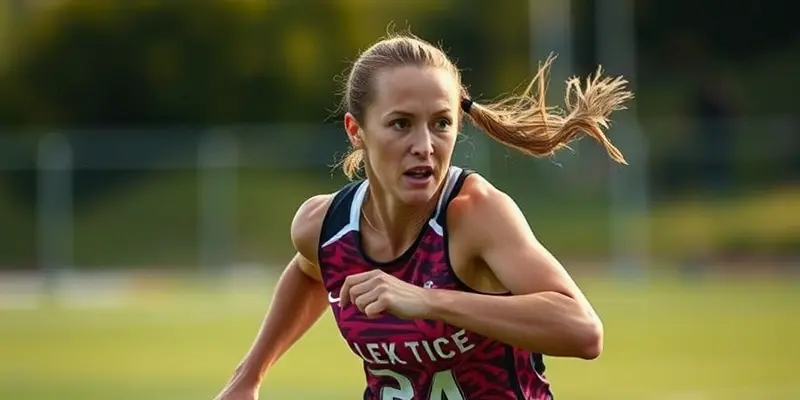Staying active and injury-free is a goal that unites all fitness enthusiasts—whether you’re new to the gym, an amateur athlete, or chasing personal bests. But what’s the secret to bouncing back stronger after a setback? To find answers, let’s turn to the inspirational journey of Mia Hamm—soccer legend and symbol of resilient recovery.
Why Is Recovery So Important?
In the world of fitness and sport, recovery isn’t just about sitting still—it’s a key strategy for long-term progress. Did you know professional athletes often schedule rest with as much intent as workouts? Recovery allows your body to repair, rebuild, and adapt. Without it, risks for burnout and injury skyrocket.
Recovery isn’t only for Olympians! Everyday runners, lifters, or weekend warriors benefit just as much. Think of recovery as refueling your car on a long road trip—skip it, and you’ll stall before reaching your goal.
How Pro Athletes Like Mia Hamm Approach Recovery
Mia Hamm’s soccer career was defined by more than just goals. Her longevity was powered by smart choices—even taking a break from college competition to prioritize her health ahead of international play. She relied on a team: expert coaches, physiotherapists, and nutritionists. Hamm also navigated life’s big transitions, including family and coming back after childbirth, with strategic rest and a flexible mindset.
What Can You Do?
- Listen to your body. Soreness, fatigue, or mental burnout are signals to ease up and recover.
- Build your own support squad. Seek professional guidance from coaches or physical therapists.
- Don’t rush your comeback after injury or big life changes—whether it’s a knee strain or a new baby, gradual progression matters!
Common Injuries in Active People—and How to Prevent Them
Soccer players and fitness lovers face many similar injury risks. Here are the most common and what you can do:
- ACL Tears and Knee Injuries: Strengthen your legs and core. Try “FIFA 11+” warm-up drills for stability.
- Hamstring Strains: Add flexibility work and avoid explosive sprints without warming up.
- Ankle Sprains: Practice balance and proprioception (think standing on one leg).
- Overuse Injuries: Vary your routine and listen to niggling aches before they become serious.
Evidence-Based Prevention Strategies
- Warm up with dynamic movements, not just static stretching.
- Add neuromuscular training—simple balance exercises or single-leg movements help.
- Gradually increase your activity. If you ran 10k one week, add just 1-2k the next.
Nutrition Hacks for Faster Recovery
You can’t out-train a poor diet—especially during recovery. What’s on your plate directly affects how fast you heal:
- Protein: Aim for about 1.4–2g per kg of body weight to rebuild muscle (chicken, fish, tofu).
- Micronutrients: Get enough vitamin C (citrus, berries), calcium (yogurt, greens), vitamin D (fatty fish, fortified milk), and iron.
- Hydration: Water speeds up every recovery process. Don’t wait until you’re thirsty.
Bonus tip: After tough sessions or injury, include a recovery shake with both carbs and protein within 30 minutes.
Tools & Mindset for Muscle Repair
Today’s athletes (and fitness fans) can use science-backed gadgets and mental strategies:
- Foam Rollers & Massage Guns: Relieve tension and improve blood flow.
- Compression Gear: Reduce swelling after tough workouts or minor sprains.
- Cold & Heat Therapy: Use ice for new injuries, heat for stiff muscles.
- Wearable Tech: Track activity and sleep to avoid overdoing it.
Building Resilience: The Athlete’s Mindset
Goal-setting is crucial—break your comeback into small steps. Hamm was famous for visualization for healing and focus. Support systems matter too: talk to family, friends, or teammates when motivation dips.
Think of recovery setbacks like business challenges. Temporary losses? Yes. But with the right strategy, you can innovate, adapt, and come back stronger.
Special Consideration: Recovery After Childbirth
Returning to activity after childbirth is a unique challenge—one Hamm navigated with patience and support. The key steps?
- Start with gentle activity as cleared by your doctor.
- Focus on core and pelvic strength before resuming strenuous workouts.
- Use progressions—and celebrate every milestone, no matter how small.
Conclusion
Whether you’re chasing gold medals or simply want to move pain-free, strategic recovery is your best ally. Mia Hamm’s playbook teaches us that performance isn’t just about intensity—it’s about wisdom, patience, and resilience. Set goals, fuel well, invest in quality rest, and ask for support when needed.
Remember: your comeback—no matter how big or small—can inspire others too. Keep moving forward, the Mia Hamm way!

